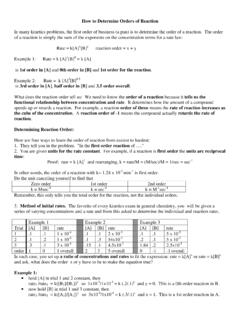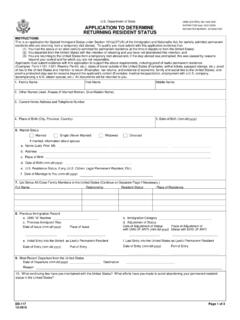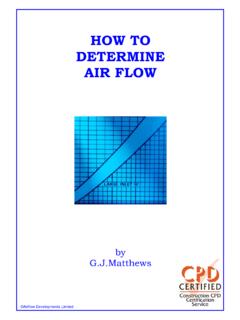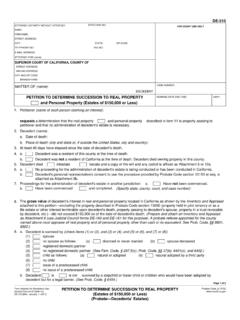Transcription of A Hooke's Law Spring Determine the Spring Constant
1 A Hooke's Law Spring Determine the Spring Constant Hooke's Law states that the restoring force of a Spring is directly proportional to a small displacement. In equation form, we write F = -kx where x is the size of the displacement. The proportionality Constant k is specific for each Spring . The object of this virtual lab is to Determine the Spring Constant k. Displacement is measured in centimeters. Each of the blue weights has a mass of 50 grams. The gray virtual weight hanger has no mass. Snapshots of the lab are found in the four figures that follow. 50 grams mass is 2 cm displacement. 100 grams mass is 4 cm displacement. 150 grams mass is 6 cm displacement. 200 grams mass is 8 cm displacement.
2 These data have been entered into the Mass Displacement table to the left. (grams) (cm). For each snapshot above the downward 50 2 pull of gravity is balanced by the upward pull of the Spring . A force or free-body 100 4. diagram of this is shown on the right- 150 6 hand side. 200 8 Note that the restoring Spring force is given by Hooke's Law as kx. This equilibrium can be expressed as W = kx. W is the weight of the added mass. Therefore, the Spring Constant k is the slope of the straight line W versus x plot. Weight is mass times the acceleration of gravity or W = Weight Displacement mg where g is about 980 cm/sec2. Using this (dynes) (cm). relationship weights are computed for the masses in the 49000 2.
3 Table above. The results are on the right. 98000 4. Data from this table are plotted on the graph below. Note that the points fall precisely on the line since this 147000 6. is a virtual experiment. 196000 8. Standard non-virtual lab data will be scattered a bit. Just spot the best straight line fit and draw the line in with a ruler (or run a linear least squares calculation). As stated above the relationship depicted on the graph is W = kx where k is the Spring Constant . Therefore, the Spring Constant is the slope of the line. Slope of a line is commonly defined as the rise over the run. This is figured in the final plot of W versus x. Thus, the Spring Constant of the virtual Spring is 24,000 dynes/cm.
4 2005-2008 4 Physics











